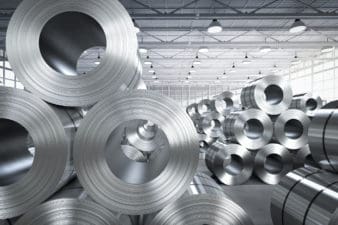In late 2011, gold prices peaked at approximately $1,900 per ounce, then retreated steadily to levels of over $1,200 per ounce at the end of 2013. Prices are currently at just over $1,100.
Yesterday was a big day for gold, as the Fed released that inflation has fallen and interest rates would be kept at current levels. There are certainly many questions that remain, though. Coming off a period of record production and declining demand, where is the gold market headed from here? Will gold continue to strengthen, or will it return to its downward drift?
If you believe that rates will stay low for longer than the market is pricing in, and that a weak economy will cause investors to turn to gold for its “safe haven” qualities, then here are some stocks to consider.
Safe Haven: strength in gold driven by weak economic data
Weaker-than-expected data from the FOMC’s release was uninspiring. They cited the moderate pace of economic expansion and said they expect inflation to reach its 2% target only by 2018. Furthermore, the FOMC continues to see risks to the outlook for economic activity.
What to expect
The one positive that has happened in the environment of weakening commodity prices is that out of necessity, companies have looked more closely at operational efficiencies and the expense side of the equation. Simply put, since revenues have been declining, companies have been focusing on reducing expenses in order to preserve the health of the company.
Agnico Eagle Mines Ltd.’s (TSX:AEM)(NYSE:AEM) stock price remains flat year to date and decreased 13% in the last six months. In its latest earnings report, the company reported higher production (+23%) and lower costs. The 2015 all-in sustaining cost per gold ounce is expected to be $870-890 per ounce. After reducing the capital budget in 2013 and 2014, the company has announced that the 2015 capital budget has been increased, which may be a good sign of things to come.
Kinross Gold Corporation (TSX:K)(NYSE:KGC) has also made strides in improving its cost structure, as the company recently updated its guidance for 2015, lowering its expected all-in sustaining cost per gold equivalent ounce to $975-1,025 from $1,000-1,100 and narrowing its production guidance to the top end of its previous guidance, or 2.5-2.6 million ounces.
However, production growth in the second quarter was only 3%, and the production profile going forward is declining, so there are certain company-specific struggles that make it the more risky choice.
Bottom line
The bottom line is that the fate of gold prices is really dependent on many factors, including the health of the global economy, physical demand, and production levels of the metal. But at least at the company level we have seen a renewed focus on improving efficiencies and cost structures.





